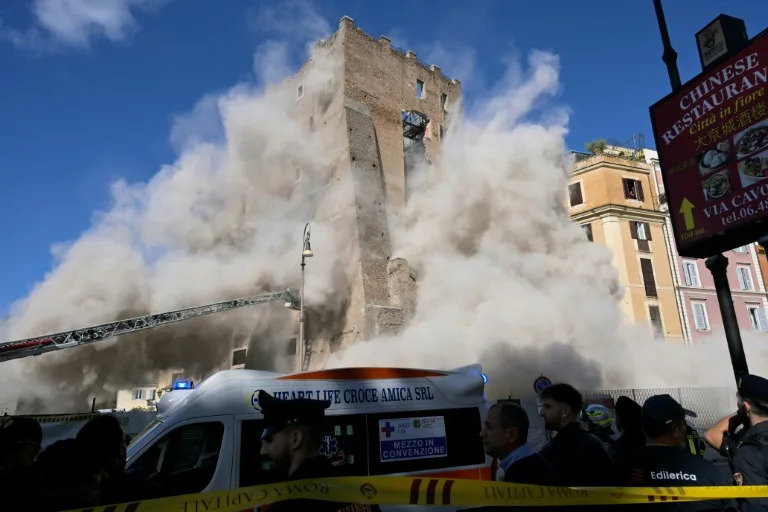The recent collapse of a medieval tower in Rome has drawn international attention, underscoring a troubling pattern of workplace accidents in Italy. The incident occurred on March 11, 2025, when a partial collapse of the Torre dei Conti resulted in the death of Octav Stroici, a 66-year-old Romanian worker. Stroici succumbed to injuries after being trapped for hours under the rubble of the structure, which was undergoing renovation as part of a public project funded by the European Union.
Following the tragedy, Natale Di Cola, secretary general of the CGIL union in Rome, expressed profound grief, stating, “Today is a day of pain and anger.” The CGIL organized a torchlight procession to honor Stroici’s memory, emphasizing the urgent need for improved safety measures at workplaces across the country. An investigation into the circumstances of the collapse is currently underway in the vicinity of the Colosseum, where a fellow worker lamented that the site was “not safe.”
According to the Italian National Institute for Insurance against Accidents at Work (Inail), approximately 575 people have died in workplace accidents in Italy in 2025 alone. The construction and manufacturing sectors have been particularly affected. While this incident rate is only slightly above the European Union average, the frequency of such tragedies raises concerns about systemic safety failures.
On the same day as the tower’s collapse, four additional fatalities were reported across various workplaces in Italy, including a 31-year-old who died after falling in a quarry near Brescia and a 63-year-old construction worker who passed away two months after an accident in Naples.
Government Response and Ongoing Safety Concerns
In response to the rising toll of workplace accidents, Giorgia Meloni, Italy’s Prime Minister, recently introduced a new law aimed at enhancing workplace safety. The decree, which followed extensive discussions with trade unions, mandates a nationwide electronic badge for companies involved in construction projects, particularly subcontractors. Additionally, it increases inspection measures and offers financial incentives for companies that successfully reduce workplace accidents.
The UIL union has acknowledged this new legislation as a step in the right direction but cautioned that “there is still much to be done” to ensure worker safety. Francesca Re David, confederal secretary of CGIL, criticized the measures as “extremely limited,” asserting that they fail to adequately address the urgent issues facing workers in Italy.
Personal Accounts and the Human Cost of Safety Failures
The impact of unsafe working conditions is further illustrated by personal stories from workers. Antonino Ferrara, a factory worker in northern Italy, recounted a harrowing incident in 2022 when his right arm was crushed in an aluminum melting press. He described the moment as one where “my world collapsed,” noting a lack of training and inadequate protective gear at the time of the accident.
Fabrizio Potetti, regional secretary of CGIL in Lazio, highlighted the significant disparities in safety standards, particularly among subcontractors. He pointed out that while large companies maintain a low accident rate, smaller firms often cut corners on safety and training, leading to higher incidences of workplace injuries.
The UIL union echoed these concerns, emphasizing the need for improved training quality and measures to combat undeclared work. Ivana Veronese, UIL confederal secretary, stated, “We cannot stop. The lives of workers must be respected and protected, to achieve the only tolerable number—zero.”
As Italy grapples with these ongoing safety challenges, the tragic collapse of the Torre dei Conti serves as a stark reminder of the urgent need for effective reforms in workplace safety standards. The continuing toll of accidents highlights the critical importance of taking decisive action to protect the lives of workers across the nation.






